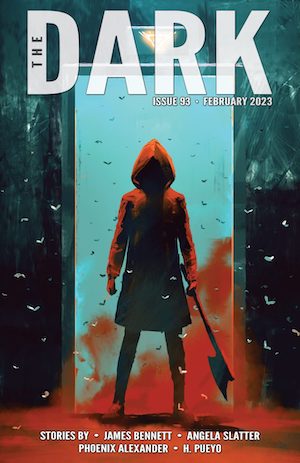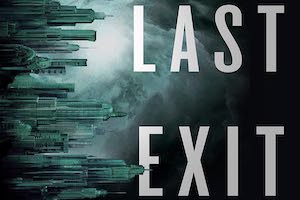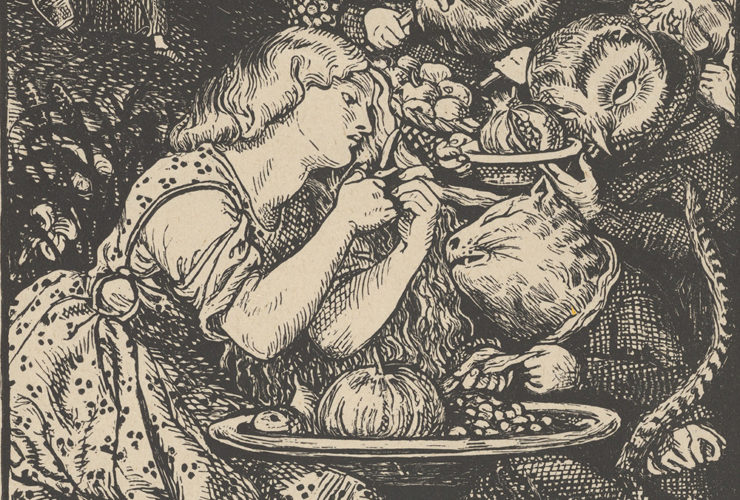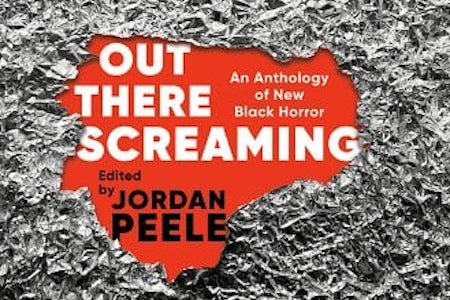Welcome back to Reading the Weird, in which we get girl cooties all over weird fiction, cosmic horror, and Lovecraftiana—from its historical roots through its most recent branches.
This week, we cover Angela Slatter’s “The Names of the Drowned Are These,” first published in the February 2023 issue of The Dark. Spoilers ahead!
“Sometimes, there’s a chance.”
Adie Kane returns to her home in Tasmania once a year. This time she takes a room in nearby Ganymede, then drives up to “the lake (dam).” She sits on the same rock as always and stares at the “same black unmoving waters”—“nothing shifts, not since that first flood settled.” And she thinks of the end, knowing that “Every so often there’s a chance for reversal…For a thread pulled to drag things backwards… For the drowned places to rise. For the dead to walk again…”
***
Michael’s discovered that driving anywhere in Tasmania takes forty-five minutes longer than Google predicts. Though his grandparents were from the island, it’s his first visit. He’s not impressed by the roads, “an eclectic mix of blacktop, washed out gravel, and fuck-you potholes,” nor by the hulking ore trucks that barrel past his compact rental car. He regrets agreeing to meet Adie’s family here, but the sex is good, and he’s not ready to give that up quite yet.
***
In the 1800s, Adie’s great-great-great-great grandmother oversaw the building of the first “proper” house in Nessa’s View. Many might have called her a witch, though never to her face. Convict laborers feared her; if any slacked off, she’d grab the overseer’s whip and lash them until they bled. Nessa Kane knew the value of blood. She knew nothing worthwhile came for free, and her husband knew better than to interfere with her methods for wringing prosperity from a hard land. One night she led a convict to the new-dug house foundations. After he seeded her with her first child, she cut his throat and buried him on the spot. It was this nameless man who “paid the required tithe, gave [the Kanes] an anchor to the earth.” He was Nessa’s “sacrifice to the past and the future;” his blood keeps Adie tethered to Nessa’s View.
***
There’s a “tiny piece of heart-ice” that chills Adie even on warm days, which this one is not. She avoids looking toward the dam and the new town beyond it. If she concentrates on the water’s surface, she might see the houses beneath.
Ganymede got on the map because of its copper mine, which has poisoned everything around it. Adie hates the place that drowned Nessa’s View so it might thrive. Many View residents took what the government offered and moved out. Some went to Ganymede. Descended from these were the aunt and uncle who raised Adie, living only long enough to see her independent. It was Aunt Miriam’s duty to teach Adie Nessa’s ways and ensure Adie would search out the “other required vessel” who might cause “the drowned places to rise.” It was Miriam who left Adie alone with “the burden of names.”
***
Michael arrives in Ganymede and receives Adie’s text: At the dam. Bring food.
Meanwhile she reviews the names of those who refused to leave Nessa’s View, who drowned under the waters of the dam. They include Elizabeth and Benedict Kane, who shared a closer relationship than state or church preferred, and their daughter Sarah. Sarah was Adie’s mother. Her father was unknown.
Nessa’s blood-sacrifice wasn’t enough to prevent the flooding. But what Nessa wrought remains potential. It waits under the surface, “a thread of blood thicker than water.”
***
Buy the Book
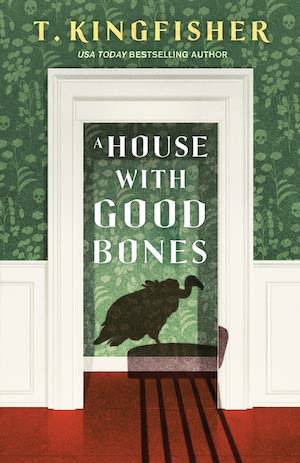

A House With Good Bones
Michael joins Adie at the dam with take-away. Couldn’t they have met her family in town for lunch? She replies: “We are with my family.” With no house in sight, he’s confused, uneasy. Adie’s older than him, but she shouldn’t sound like his dementia-afflicted grandmother. She looks weirdly older, too. About his own relatives in the area he knows little, though he remembers Granny whispering, Best forget.
Adie talks about how the people who drowned in Nessa’s View believed the magic would keep them safe. Their choice to die in the town gave their deaths power, made their blood “a thread that can be tugged at to create a path that might lead back.” Her family, her blood, are here. His are, too. Did he know his grandmother was a Kane? All the Nessa’s View bloodlines end in the two of them, and they’re the ones who can tug the redeeming blood-thread.
Ignoring Michael’s disbelief, Adie walks to the water’s edge and takes out a Swiss Army knife. Michael approaches her, hands raised. She slashes his palm, then hers, then grabs his hand so their mixed blood drips into the dam. “Blood is thicker than water,” she mutters, then repeats the names of the drowned over and over until the water at their feet builds into a “blood-red wave,” a tsunami that destroys the concrete dam. Water rages downstream and floods Ganymede. Nessa’s View rises, houses covered in algae and weed, the old petrol station a “dinosaur skeleton.” Doors open and the “fish-bellied dead” walk out.
Adie stares at them, suddenly forgetting their names. Her duty is done. His hand still clasped in hers, Michael demands to know what she’s done. To which she responds: “Time to meet the family, Michael.”
What’s Cyclopean: Tasmanian potholes may be “gullies, abysses, or crevasses”—much like artificial lakes lying over lost towns, one supposes.
The Degenerate Dutch: It doesn’t occur to Michael that hostility from the locals might be about Adie—after all, he’s the centre of the universe.
Libronomicon: Two of the drowned dead are Cain and Abel Katzenjammer, “twin sons of religious parents” who apparently had absolutely zero concerns about bad omens.
Anne’s Commentary
As an obscure tome enthusiast, I often feel compelled to issue caveats to the unwary. Here’s one for parents. Books lurk in odd corners of your local public library that can capture your child’s mind and make him or her socially awkward for life. I put forward myself as an example. One youthful day, I innocently pulled a coffee-table-sized book from the Life Sciences section. Its cover featured a cobra with hood flared in full don’t-fuck-with-me posture. It was a warning I ignored. I checked the book out. I took it home. I read it right in front of my mother and grandmother, whose literary-policing antennae were sensitive only to books that looked like they might have sex in them. The blatant phallic imagery of the cover obviously escaped them.
And so, undefended, I was sucked into a vortex of fascination too little shared by the general public, so that whenever conversations lagged I was apt to blurt out, “What’s your favorite venomous animal? And do you have any at home? If so, can I come see them?”
People think they don’t keep “poisonous” animals around the house, thank you very much. I’m happy to inform them that all spiders are venomous, and that at any given time you’ll have a spider within a few feet of you, that’s how charmingly ubiquitous they are. Sadly, snakes aren’t as common, and many of them aren’t even venomous, or not with medical significance to humans anyhow. Although, if we were in Australia –
I think I asked Ruthanna, when she’d returned from a trip to that blessed continent, whether she’d seen any deadly fauna. I think she might have said, “Noooo…” [RE: One brownish snake slithering rapidly into the underbrush on Phillip Island; other than that, my most dangerous encounter was with the magpies that divebomb bikers during nesting season, which it wasn’t. Absolutely no U.S. friends believe that I didn’t encounter a lowland copperhead curled around a gympie-gympie tree at every Melbourne intersection.] Too bad, because Australia boasts some spectacularly toxic creatures, as I learned from that above-mentioned fateful book, Roger Caras’s Venomous Animals of the World. Admittedly, its relatively low population density puts Australia’s envenomation problems way behind those of Asia, Africa, Latin America, even Europe and North America. Still. What with inland taipans and death adders and brown snakes, box jellies, blue-ringed octopi, funnel web and redback spiders, stonefish, cone shells, even platypuses oh my, the potential is there.
Rather like the potential of the blood-magic lingering in the waters above drowned Nessa’s View.
Tasmania, Australia’s southernmost state, is the least scary place in Australia if you look at the dangerous-to-man numbers. The deadliest sea creatures (sharks excluded) are far to the north. There are only three species of venomous snakes. The infamous marsupial “devil” isn’t out looking for trouble or spinning up mini-tornadoes. The island does have the jack jumper ant, called “weirdly aggressive” and packing a powerful sting that can cause anaphylactic shock in the allergic. And it can and does jump. However—
Tasmania has not escaped the world’s most lethal invasive animal, by deed and potential. Which is, like Soylent Green but less shelf-stable, people. In Slatter’s story, Nessa Kane is the obvious villain, founding her compact dynasty on convict labor, sweat and blood. Blood in particular, because “like so many from the Old Country—wherever that might happen to be—Nessa Kane knew the value of red.” As in so many magical traditions, blood is the price of enduring prosperity, enduring life. A smart witch pays the necessary tithe out of someone else’s veins.
Smart land and copper mine developers pay the necessary tithe out of some other community’s loss. Ganymede will need a reliable supply of water. Nessa’s View is just the spot for a dammed reservoir. Ganymede will be profitable enough to get on maps. Nessa’s View profits only its inhabitants, and them none too plentifully. Simple math decides the issue. Engineering trumps blood magic with the brute force of flooding water (which, unbeknownst and unintended by the engineers, carries a countermagic to the blood.)
But blood is thicker than water. What Nessa has wrought with blood can be restored by her bloodline, conceived with the same act that founded her town. Blood and semen, sex and murder, versus the developers’ and government’s “blood” money and arsenic. Are we supposed to applaud anyone in this situation, the dam-makers for drowning an evil-born legacy or Adie for drowning poisonous Ganymede and draining Nessa’s View? Should we feel sorry for Michael, duped into Adie’s scheme? Slatter’s shown enough of him on his drive to Ganymede and at the B&B for us to understand he’s a bit of a self-absorbed and superficially charming jerk. Does that merit an introduction to the Dripping Dead?
I guess not.
I can feel less conflicted about sympathy for Adie. She’s been groomed from birth by an aunt and uncle with no purpose beyond facilitating Nessa’s revenge through Adie, the last of Nessa’s female line. Beyond—or through?—this indoctrination, Nessa seems able ultimately to possess her great-great-great-great granddaughter, making her look to Michael both older and more darkly seductive, bringing that coldness to the surface that’s always been a “tiny piece of heart-ice” deep inside her: a shard of Nessa, congenital potential through generations.
With Nessa’s View recovered and its drowned emerging, Adie is “empty, her burden, her duty done.” She forgets her litany of names. Is she finally free of Nessa, or are she and Nessa as good as one?
And…what about the Dripping Dead? What are their plans post family reunion? I don’t know, except that a few venomous snakes and spiders are probably going to be the least of Tasmania’s worries now.
Ruthanna’s Commentary
West of Arkham, where the hills rise wild, 21st Century Lovecraft Country still gets their water from an unnamed reservoir. There, still waters lie over the place where an impossible color mutated crops and animals and people. It’s probably fine; it’s not even a superfund site. Maybe throw some pollution-eating fungus in there if you’re worried. Oh, wait.
It’s probably fine; after all, a few miles to the west and more firmly in our own universe, the Quabbin Reservoir supplies drinking water for much of western Massachusetts. Four towns were flooded. On-campus apartments at my alma mater of Hampshire College are named for three of them: Enfield, Prescott, and Greenwich.
There are stories like this around the world—I just happen to be a Lovecraft nerd from Massachusetts. A quick search suggest that Nessa’s View is one of many hydro projects and flooded communities in Tasmania. Lake Pedder was responsible for the birth of an early green party, and mining town Crotty has recently risen from the waters of Lake Burbury (hopefully sans dripping dead). We have at least as fraught a relationship with the bodies of water we create as we do with those beyond our control.
Adie has a complicated relationship with both the lake (dam) and the community it covered. She has to keep reminding herself of that parenthetical—or perhaps equally, she always thinks of it that way because just calling it a dam would gloss over the artificiality, the harm, the theft of home.
But that home is no simple thing either. It was a prison labor camp, spills of blood to force riches to the top, and deliberate human sacrifice to literalize the metaphor of all the slightly-less-deliberate human sacrifice. Now it’s a spill of arsenic. Not to mention (as the story doesn’t), the displacement of whatever aboriginal tribe lived in the area previously, a silent precursor to the later displacement of Nessa’s View with the lake (dam). We hear that Adie hates Ganymede, but never that she loves Nessa’s View.
Adie, like many scions of magic-prone nobility (or just magic-prone exploiters of opportunity, which is the same thing but with the exploitation starting more recently), is as much victim of power as inheritor. What she feels at story’s end doesn’t seem like triumph. Charitably, it seems like someone satisfied but exhausted by the completion of a long, unavoidable task. Uncharitably, it seems like a wind-up toy that’s close to winding down. She’s Nessa’s tool, or her aunt’s, pulled on a leash of blood. The goal was never her own.
No one really comes off well here. Not the off-the-page creators of the lake (dam). Not Nessa and Adie and the generations between who passed down said goal. And not the men whose self-interest and lust and underestimation of female power make them vulnerable. But their flaws are far from simple or complete. Nessa’s un-named sacrifice was a prisoner who probably had little enough hope in his life, tempted by a moment’s mutually exploitative pleasure. Michael—who sees the things he does for Adie as trades for sex he’s not yet willing to give up, who resents payment regardless of who pays—is also a man who wears the fabric of his grandmother’s memory, and who remembers her with rather more respect and personhood than he grants Adie.
Adie describes “economics” as a “filthy word” and a “poor excuse.” As is all too often the case, capitalism is the looming inhuman force that breaks us in passing, on its way to larger and equally inhuman goals. In this case, it’s embodied in the dripping dead—now ready to continue going after their goals without Adie’s help?
Next week, join us for Chapter 6 of Hilary Mantel’s Beyond Black.
Ruthanna Emrys’s A Half-Built Garden is out! She is also the author of the Innsmouth Legacy series, including Winter Tide and Deep Roots. You can find some of her fiction, weird and otherwise, on Tor.com, most recently “The Word of Flesh and Soul.” Ruthanna is online on Twitter and Patreon, and offline in a mysterious manor house with her large, chaotic, multi-species household outside Washington DC.
Anne M. Pillsworth’s short story “The Madonna of the Abattoir” appears on Tor.com. Her young adult Mythos novel, Summoned, is available from Tor Teen along with sequel Fathomless. She lives in Edgewood, a Victorian trolley car suburb of Providence, Rhode Island, uncomfortably near Joseph Curwen’s underground laboratory.










